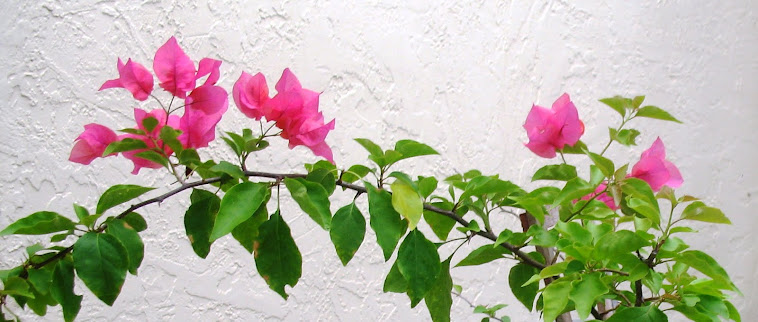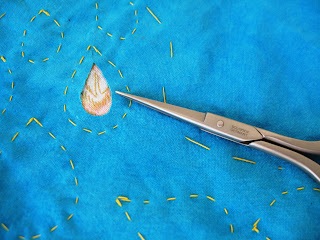What? No! It can't be! It is? Oh my!
“Unfortunately, fabric painted with oil paints will deteriorate over time, and that is why canvases must be primed before use with oil paints”
Recently, there has been a flood of books, videos, tutorials, etc. that promote embellishing quilt blocks with Oil Pastels, Oil Sticks, and Paint Sticks. This technique seems especially popular with applique needle artist. Many that work in the Baltimore-style blocks are using this technique to stencil and shade flowers, sailing ships, vases, fruit, etc. I have also seen this technique used to highlight quilting designs on whole cloth quilts. The effect is amazing and seems to bring the designs to life. However, what most quilters do not know is that this artist material damages fabric and may be quite toxic.
All artist grade pastels, even the wax-based or chalk type, contain pigments. The higher the pastel quality, the higher the pigment content. Many pigments are toxic so each color must be checked to see if it’s safe. This excerpt is taking directly from the product description on the Dhama Trading Company’s website.
“All colors of Shiva Professional Grade Artist's Paintstiks are AP non-toxic, with the exception of Cadmium Orange, Cadmium Red Deep, Cadmium Red Scarlet, Cadmium Yellow, and Cobalt Blue, which bear the ACMI Caution Label. Those particular colors are not intended for use by or for products for children 12 and under.” Working with toxic pigments is dangerous. Applying it to a quilt top that will live in someone’s home is probably not a great idea either.
Even if you do your research and only select the safest pigments, you are still left with the risk of damaging your quilt. In the 15th century, painters discovered that the oil used to bind the pigment in paint would deteriorate the painting support – usually wood and later on fabric. They began to apply a sizing or ground to the support that acted as a barrier between the fabric (or wood) and the oil. I am personally very grateful that the early painters discovered this prior to the Renaissance or we would not have some of the magnificent paintings we do today because they would have crumbled and cracked away into nothingness.
You can read all about the history and evolution of formulas and techniques for protecting the painting’s support in one of my favorite technical books , “The Artist's Handbook of Materials and Techniques: Fifth Edition, Revised and Updated” by Ralph Mayer.
As I write this, I can hear all my blog readers screaming, “Say it ain’t so! I LOVE my stenciling, I love my embellishing techniques!” Not a problem - you can still use all of your techniques safely and ensure the permanence of your quilt by switching a few of the key materials.
Before I fill you in on my preferred materials, I would like to make clear that I have no affiliation with any of the manufacturers, distributors, or suppliers of any of these artist’s materials discussed in my blog. My preferences are based solely on my personal experience using these products. Your experiences may differ. I encourage each of you to try a range of products to find what works best for you. That being said, I only use water-based or wax-based, non-toxic artist materials directly on my fabric. My favorite water-based media is All-Purpose Ink by Tsukineko (pronounced Soo - Key – Necko). My favorite wax-based media is Prismacolor Pencils.
I heat set all ink work by laying a white paper towel over the area and pressing with a hot iron.
I heat and chemically set all color pencil work. First, I heat set by laying a white paper towel over the area and pressing with a hot iron. When the fabric cools, I apply an infinitesimal dab of Jacquard Textile Color in Colorless (#100) with smallest brush I can find. Apply in tiny dabs. I let the area air dry. I then heat set again with the paper towel and the hot iron. From a time management perspective, I don’t recommend pencil for large areas because you could be dabbing for days.
Some of you may recognize the block at the top of this posting. It is “The Brickmaker’s House” from Elly Sienkiewizc’s book “Baltimore Elegance. This is the block that I made, at Elly’s request, for the book. Notice that the bricks in the brickhouse are two different sizes – one size for the main house and a smaller brick for the chimneys. I was not able to find any commercially printed, brick texture fabric that was the correct scale. Therefore, I cut out freezer paper stencils of the brick patterns and made my own fabric using All-Purpose Ink by Tsukineko. See my tutorial page, Stenciling with Inks, for tips on how to use artist’s inks to embellish your quilts.


























































